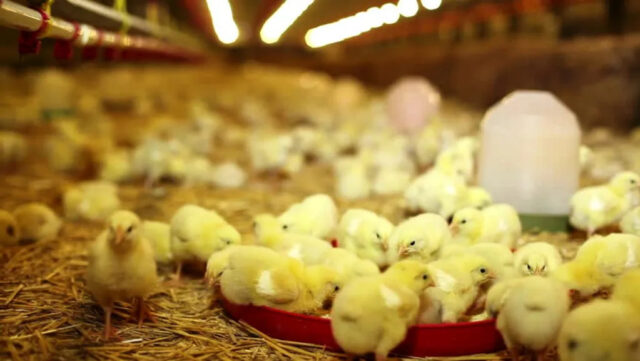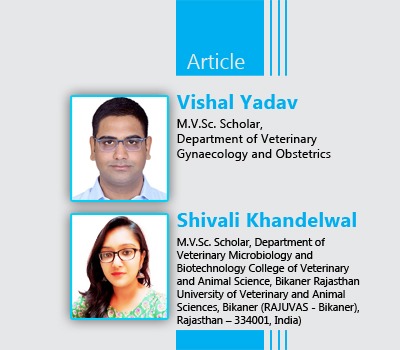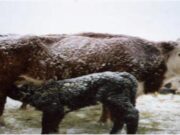
Biosecurity, which literally means the safety of living things. The FAO and WOAH (World Organisation for Animal Health) define biosecurity as the implementation of measures to reduce the risk of the introduction and spread of disease agents. Although ways of classifying these measures may vary, they all refer to the same basic principles of bioexclusion (i.e. preventing infectious agents from entering the farm) and biocontainment (i.e. preventing infectious agents from exiting) and were implemented via; segregation to raise barriers to infectious diseases, cleaning and disinfection.
The two principles (bioexclusion and biocontainment) of biosecurity encompass the notions of isolation, traffic control, and sanitation, which are described below:
- Isolation, which ensures no contamination of flocks through housing and personal protection equipment.
- Traffic control, which restricts the movement of products, stocks, and persons.
- Sanitation which includes methods for farmers to maintain disinfection and cleanliness in flocks.
Biosecurity is the cheapest and at the same time most effective means of disease control available without, which no disease prevention programme will work well. Biosecurity is a defensive health plan and hygienic procedure that can help to keep your farm disease free. Biosecurity is therefore is one of the integrated parts of farm operations. As the poultry operation becomes more and more efficient, however, they also become a threat to themselves and their neighbors and the concentration of more birds in limited space. Poultry farmers should take time to eliminate as many disease-causing organisms as possible.
Classification of Biosecurity
There are three distinct types of biosecurity needed to provide the highest level of defense to your poultry farm. A three-pronged approach which provides layers of security considers the specifics of your farm, and is both enforceable and sustainable is the only way to ensure that there are no gaps in the safeguarding of your poultry, staff, and livelihood.
- Tier 1: Conceptual biosecurity: considerations related to your farm’s location.
- Tier 2: Structural biosecurity: considerations related to the physical design and layout of your farm and its buildings.
- Tier 3: Procedural biosecurity: The processes and procedures you follow during normal day-to-day operations.
A. Conceptual Biosecurity
- It is best to build farm in an isolated area, at least three km away from the nearest poultry in the case of the breeder farm and 1.6 km in the case of the commercial layer and broiler farm.
- In the case of breeders, the farm should be away from the major roadways that may be used to transport commercial and backyard poultry.
- Maintain enough distance between breeders and grow-out farms and facilities such as hatcheries and feed mills.
B. Structural Biosecurity
- Fencing of farm perimeter to prevent unwanted visitors.
- Test water source for minerals, bacteria, chemical contamination, and pathogen load.
- Concrete stage with suitable water and power supply for sanitation of vehicles.
- Suitable location for storage of bagged feed.
- All-weather roads within the farm to ease cleaning and to prevent the spreading of microbes by vehicles and footwear.
- Facilities for safe scientific disposal of dead birds.
- Safe housing, with suitable wild birds and rodent proofing.
- Feed, litter, and equipment should be stored in a section separated from the live bird area to prevent contamination.
- A three-metre boundary of land around the building must be kept free of all vegetation to prevent rodent and wildlife activity.
C. Operational Biosecurity
- Operation manuals should be developed for day-to-day activities carried out in feed mills, hatcheries, breeding, and grow-out facilities incorporating emergency plans.
- Proper decontamination and disinfection of equipment, houses, etc., following depletion of the flock.
- In breeder farms, all visitors and workers require to shower and use clean farm clothes to prevent cross contamination between them.
- Maintain records for visitors and their purpose.
- In the case of breeders, no vehicles or equipment should be allowed within the farm area from the time of delivery of the flock until disposal.
- In commercial broiler units, a minimum inter flock interval of two weeks is recommended. Use an effective integrated pest management program to control pests and rodents through biological, chemical, and mechanical means.
- Appropriate program of disease diagnosis and proper vaccination schedule should be implemented.
- In small-scale egg production unit, follow the all-in-all-out system. If it is not possible, pullets should be obtained from a source free of vertically transmitted diseases.
- Recycling of egg packing materials etc. should be decontaminated at the point of entry of the farm.
- Routine disease monitoring procedures like postmortem examination and periodic serum antibody assay to determine the immune status of the flock.
- Regular culling of unhealthy, unproductive, and diseased birds.
Authors:

Vishal Yadav1 and Shivali Khandelwal*2
1M.V.Sc. Scholar, Department of Veterinary Gynaecology and Obstetrics
2M.V.Sc. Scholar, Department of Veterinary Microbiology and Biotechnology
College of Veterinary and Animal Science, Bikaner
Rajasthan University of Veterinary and Animal Sciences, Bikaner (RAJUVAS – Bikaner), Rajasthan – 334001, India
*Corresponding author: Shivali Khandelwal (M.V.Sc. Scholar), email:shivalikhandelwal11@gmail.com



























